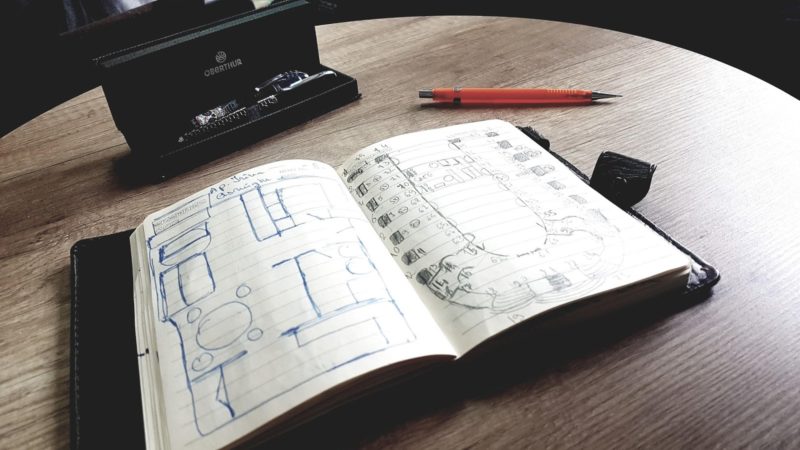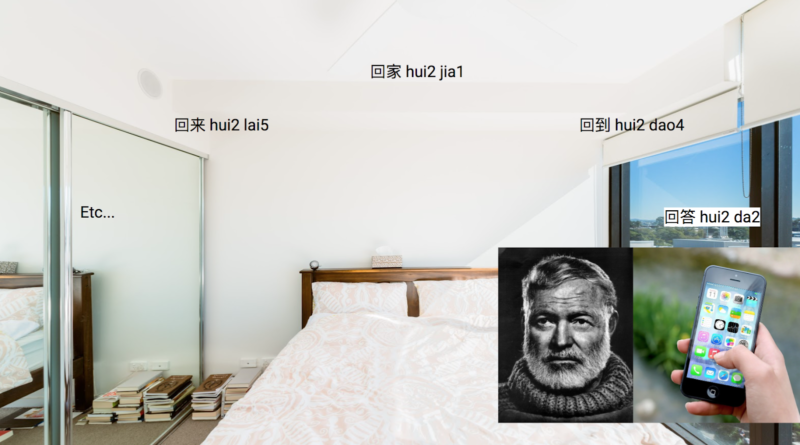How to Use Memory Palace to Learn a Language
Want to know how to memorize thousands of words? And not have the process take forever?
You absolutely can, and this post will show you how by teaching you the Memory Palace technique for language learning.
But be warned:
The key to success is the willingness to learn how to memorize one word first.
Success also comes from being realistic about the math involved in language learning. You might want thousands of words. But in the beginning, to get speaking immediately, it's better to focus on what you need .
This is where the Memory Palace technique really shines. It can help you get through the tedium of learning vocabulary for less romantic aspects of the language. I'm talking about aspects like:
- Days of the week
- Months of the year
- Colors
- Basic pronouns
Some of those categories might be tremendously exciting for you, but pretty much everyone finds certain areas that feel like a slog. We can eliminate that feeling and keep proceeding along at a rapid learning pace precisely because a proper Memory Palace Network can be scaled. And when you're using what I call Magnetic Imagery correctly, you can use the principle of compounding as you memorize vocabulary .
Let's get started.
How To Create A Memory Palace For Language Learning
A Memory Palace is a mental recreation of a room or building.
Go ahead and think of any room, perhaps your bedroom.
Notice how it has four corners and four walls?
Good. You have now started to create your first Memory Palace .
The next step is to think about where in this room you can start a clear, linear, and easy-to-remember journey.
Not a journey with your body, but with your mind.
Now, if you're not used to "mental navigation," this can feel tough. It just means that your spatial memory and imagination are a bit rusty.
That's why I started drawing these mnemonic devices on paper. Like this:

When we draw the Memory Palace, we give ourselves an objective viewpoint that helps us strategize the best possible journey.
At the risk of repetition, you want it to be linear and no-nonsense. You don't want to have to remember much, if anything, about the Memory Palace. It is a "Memory Palace" only if you already remember it.
If you're feeling really rusty, create a few more based on rooms or entire buildings. You can also use outdoor journeys, but remember that without walls and corners, you could be asking too much of your brain during the learning process.
How To Place Vocabulary In A Memory Palace
As a beginner, you can really help yourself out by picking ten words and place them in some kind of order. It could be alphabetical or based on some kind of similarity (or both). Take for example this simple list for a first run at using a Memory Palace with Mandarin:
- 回答 hui2 da2 (to answer)
- 回到 hui2 dao4 (to return to)
- 回家 hui2 jia1 (to return home)
- 回来 hui2 lai5 (to come back to)
- Etc…
In this list, 回 (hui2) repeats, so we can create a "Magnetic Bridging Figure." This mnemonic device lets us create an association that we can follow from station to station in our Memory Palace.
Hui2 sounds to my ear a fair amount like the "way" in Hemingway, and since his name starts with 'H,' it's a strong association. You might think of something else, like whey powder or a whale. It doesn't have to be a one-to-one correspondence. It just needs to trigger the sound.
On each station, you would imagine your Bridging Figure interacting with another character in a way that triggers the full sound and meaning of the vocabulary. For example, Hemingway could be entering a question about "Data" into a phone (da) and Data from Star Trek actually answers.

In your mind's eye, you would just have Heminway moving around from station to station interacting with different images to help you remember the sound and meaning of words.
Note : It's nice when you can arrange similar words in this way, but don't make it a necessity. Each word can be memorized without needing a Bridging Figure.
How To Use The Memory Palace For Long Term Retention
Sadly, a lot of people learn this approach to the Memory Palace but don't move on to practice the second half.
What you've just discovered is what memory scientists call "elaborative encoding." It's bound to have a positive effect if you practice it. However, in order to get serious vocabulary bursts, you need "decoding" or what is sometimes called "active recall."
This means revisiting the Memory Palace and calling to mind the information you placed there.
Using various effects, you will follow a robust pattern that gets the information into long term memory in a way that seriously competes with nearly every SRS program you've ever downloaded to your phone.
How?
The process I teach is called Recall Rehearsal. Using it, you revisit each Memory Palace after encoding information in it based on the following patterns:
- Forward from beginning to end
- Backward from end to beginning
- From the middle to the beginning
- From the middle to the end
- Skipping stations (1, 3, 5, 7, etc. and then back by landing on the even numbers)
Rest assured, this will give your brain a stretch. But it's not much different than what software should be doing and excels if you practice it because the discipline of active recall is unassisted and there's no way to cheat.
Unlike software programs that allow for self-assessment that usually amounts to cheating as you dismiss words you've started to find tedious, you either get it or don't with the Memory Palace technique, and submitting to the discipline strengthens your mental tenacity at the same time it improves your memory.
This works because the patterns in combination with elaborative encoding create:
- Primacy Effect
- Recency Effect
- Serial Positioning Effect
- The Von Restorff Effect
Everyone is welcome to look up the science, or you can spare yourself the time and just dive in. These techniques have been working for thousands of years by the people who use them, and you can use them too.
Preparation Is The Key
The memory techniques you've just learned are a lot of fun. But you do have to pay the price of preparing your Memory Palace in advance.
However, when you're willing to break it down and just get started with a few words, you'll quickly see how this can scale.
As Scott Young points out in Ultralearning , people who become fans of this technique really love it. That's likely because consistent practice creates an abundance of brain chemicals like dopamine and myelin.
And when you're learning more words faster, what's not to love?
The next steps are to create and use more Memory Palaces. Then, when you can memorize words reliably, start using the same techniques to memorize entire phrases. With practice, you'll often find that you can encode 3-5 words at a time.
That's my maximum in foreign languages, though when I gave this TEDx Talk in my mother tongue (with some Sanskrit in it), I found I averaged 11-17 words per station.
Everything comes down to practice , and I'm perfectly aware that this skill does require stepping away from the language you're learning for a short while to learn it.
However, because bilingualism has been shown to be so beneficial for the long term fitness of your brain, doesn't it make sense to take such a rewarding detour?
How to Use Memory Palace to Learn a Language
Source: https://www.optilingo.com/blog/language-learning-secrets/how-to-create-a-memory-palace-for-language-learning/
0 Response to "How to Use Memory Palace to Learn a Language"
Post a Comment